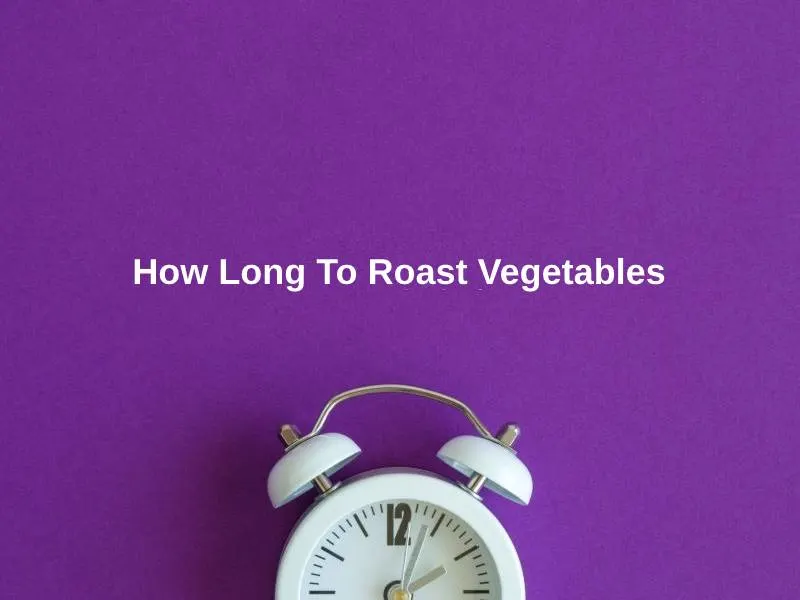Exact Answer: Half An Hour
The roasting of vegetables is an important step in getting them ready to eat. Vegetables can also be made edible by either frying them or boiling them. However, roasting vegetables is considered the best process to do so. There is a minimum requirement of time, effort and ingredients.
Unlike in frying, which makes the food oily and in boiling, which drains the nutrients, roasting vegetables helps to preserve the nutrients and at the same time, it is less oily. Moreover, roasting the vegetables also imparts a special taste and aroma to the vegetables which makes them even more delightful.

How Long To Roast Vegetables?
| Type of Vegetables | Time Taken To Roast |
| Root Vegetables | Half an hour |
| Crucifers | Fifteen to Thirty minutes |
| Tomatoes | Ten to Twenty minutes |
| Onions | Half an hour |
| Thin Vegetables | Five to Fifteen minutes |
| Soft Vegetables | Ten to Fifteen minutes |
| Winter Squash Vegetables | Half an hour to An hour |
Vegetables can be divided into seven broad categories. As can be inferred from the table above, these are root vegetables, Crucifers, Tomatoes, Onions, Winter squash, Thin and Soft vegetables.
Root Vegetables are those which grow underneath soil like potatoes, carrots and beetroot. These vegetables take nearly half an hour to get roasted. Crucifers are mostly green leafy vegetables with the likes of broccoli, cabbage, cauliflower and mustard plant. Vegetables of this category take up approximately fifteen to thirty minutes to get roasted.
Acorn squash and Gold Nugget squash are some examples of the Winter Squash category of vegetables. The time required to roast these depends on how fine they are chopped and take nearly half an hour in roasting. However, Tomatoes are soft and tender and they can be done away with within ten to twenty minutes.
On the other hand, there are Thin vegetables and Soft vegetables. These vegetables can be completely roasted within a quarter of an hour. Examples of Thin vegetables are beans and Asparagus and those for Soft vegetables are Zucchini and Bell Peppers. These vegetables are ready to eat within fifteen minutes of roasting.
Onions are a particular vegetables which has thick layers packed with a certain acid. The roasting of onions depends on how finely they are chopped before roasting. Larger pieces take more time to be roasted than smaller ones. However, it would take nearly half an hour to roast an onion.
Why Roasting Vegetables Takes So Long?
When cooking a dish, the main intention is to bring the internal temperature of food to a level that would kill microorganisms and sthe food for easy digestion. When that temperature is achieved, the food is considered to be cooked.
In the case of roasting vegetables, the appropriate temperature to cook them is 425 degrees Fahrenheit. As this temperature is attained, the vegetable becomes edible. However, this temperature may slightly differ for different vegetables and would need to be adjusted accordingly to cook the food well.
Different categories of vegetables have different internal structures and so, take different lengths of time. Root vegetables take more time to get roasted than tomatoes. This is for the reason that the root vegetables are stiff while the interior of the tomato is mostly watery.
The water content of vegetables also has a bearing on how long it needs to be roasted. Less watery vegetables like Gold Nugget squash need more time than onions or tomatoes.
Conclusion
Roasting vegetables is a popular way of getting them ready for consumption. Some other ways of cooking vegetables are frying and boiling but roasting is widely preferred as it maintains nutrition while being less oily.
The roasting of vegetables takes about half an hour. However, this may differ based on the vegetable being cooked. The internal structure and the water content of the vegetable are important factors that influence how long the vegetables should be roasted. In addition to that, the size of the vegetable pieces up for roasting also influences the cooking time.